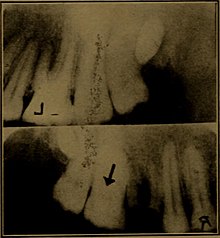Introduction and Etiology of Pulp Stones
- Pulp stones are calcifications found in the pulp chamber of the tooth.
- They are usually detected through radiographic examination.
- Pulp stones can be found in the coronal or radicular pulp.
- Factors contributing to pulp stone formation include pulp degeneration, increasing age, circulatory disturbances, local irritants like dental caries, orthodontic tooth movements, tooth transplantation, chronic pulp irritation, idiopathic factors, consumption of fluoride supplements, and genetic predisposition.
- Diseases like end stage renal disease, Marfan syndrome, and Ehlers-Danlos syndrome are associated with pulp calcifications.
Types and Histopathology of Pulp Stones
- Pulp stones can be classified based on their location: free, embedded, and adherent.
- Structurally, pulp stones can be classified as true (made up of dentine) or false (made up of mineralised tissue around blood thrombi, collagen fibers, or dying cells).
- Regular calcifications are smooth, round or ovoid with concentric laminations, while irregular calcifications without laminations can have the shape of rods or leaves and a rough surface.
- Pulp stones with regular calcification grow in size by adding collagen fibrils to their surface, while irregular pulp stones are formed by calcification of pre-existing collagen fibers.
Associations and Prevalence of Pulp Stones
- There is an increased incidence of pulp stones in patients with cardiovascular disease, carotid artery calcification, end stage renal disease, Marfan syndrome, and genetic diseases like dentin dysplasia.
- Patients with Marfan syndrome have a higher prevalence of pulp calcifications.
- Prevalence studies have been conducted in Malaysians, a northern Taiwanese population, and adult restorative patients.
Diagnostic Methods and Risk Factors for Pulp Stones
- Cone-beam computed tomography, radiographic examination (periapical and panoramic radiographs), clinical examination, history-taking, ultrasonography, and digital subtraction radiography are diagnostic methods for detecting pulp stones.
- Risk factors for the development of pulp stones include age, systemic diseases (such as Marfan syndrome), genetic factors, trauma to the teeth, and certain medications (such as calcium channel blockers).
Clinical Significance and Treatment Considerations for Pulp Stones
- Pulp stones can complicate endodontic treatment procedures and affect the success rate of root canal treatment.
- Pulp stones can contribute to pulpitis and pulp necrosis, leading to the need for further dental interventions.
- The size and location of pulp stones can influence treatment decisions and outcomes.
- Regular dental check-ups and proper oral hygiene can help prevent the formation and progression of pulp stones.
Pulp stones (also denticles or endoliths) are nodular, calcified masses appearing in either or both the coronal and root portion of the pulp organ in teeth. Pulp stones are not painful unless they impinge on nerves.

They are classified: